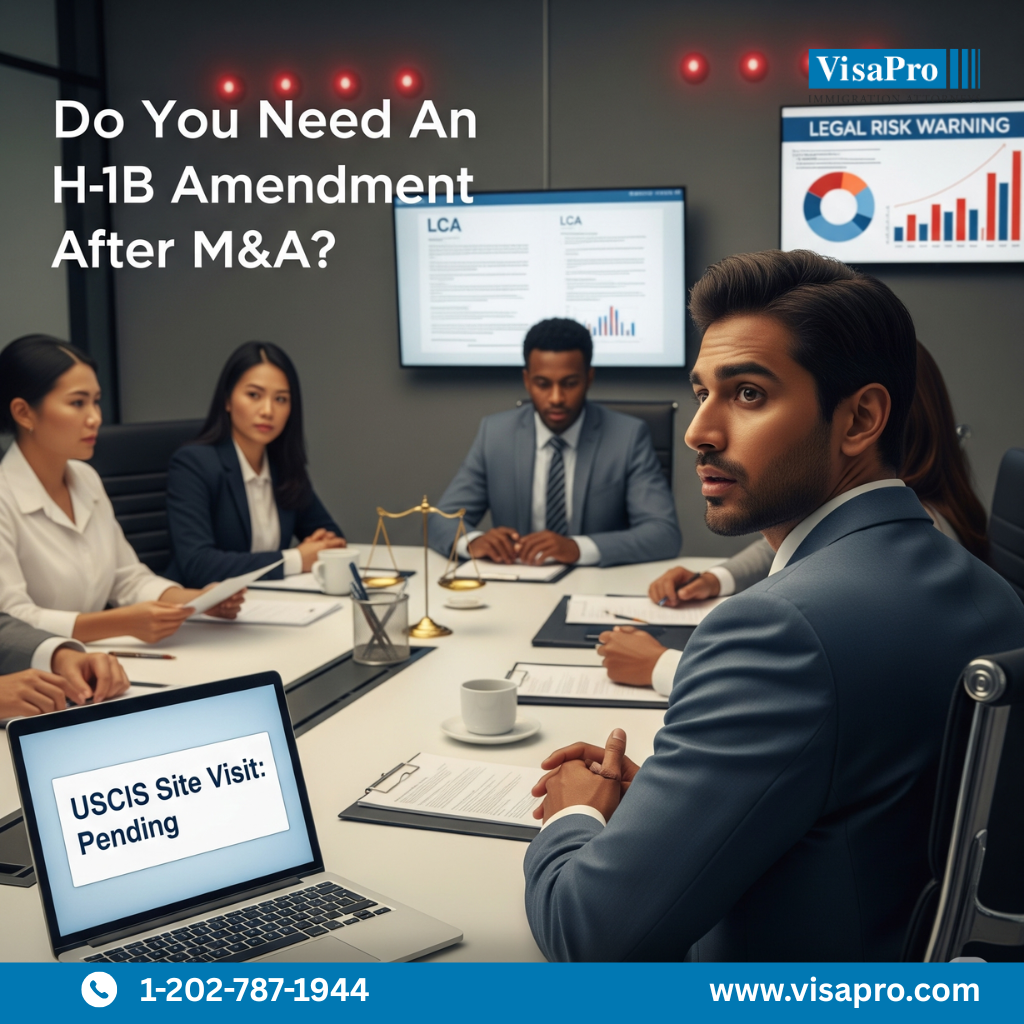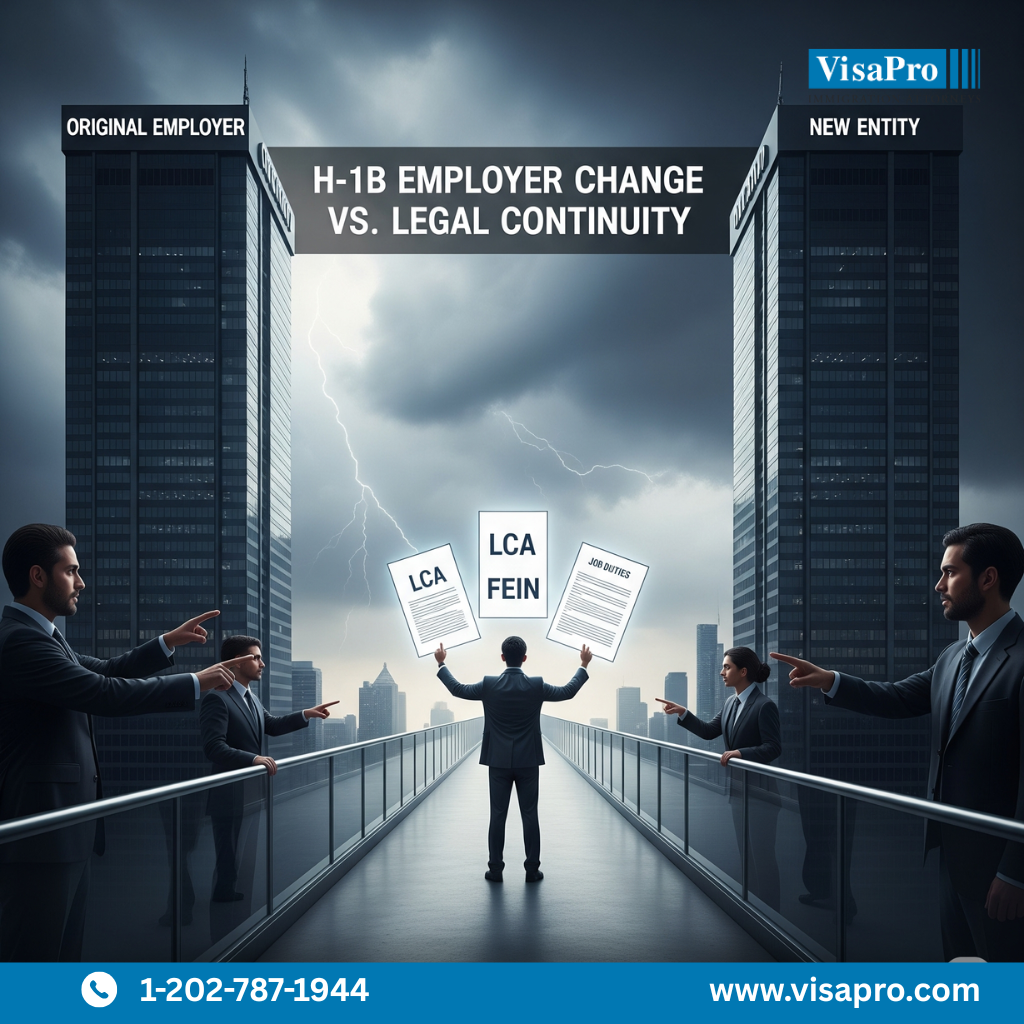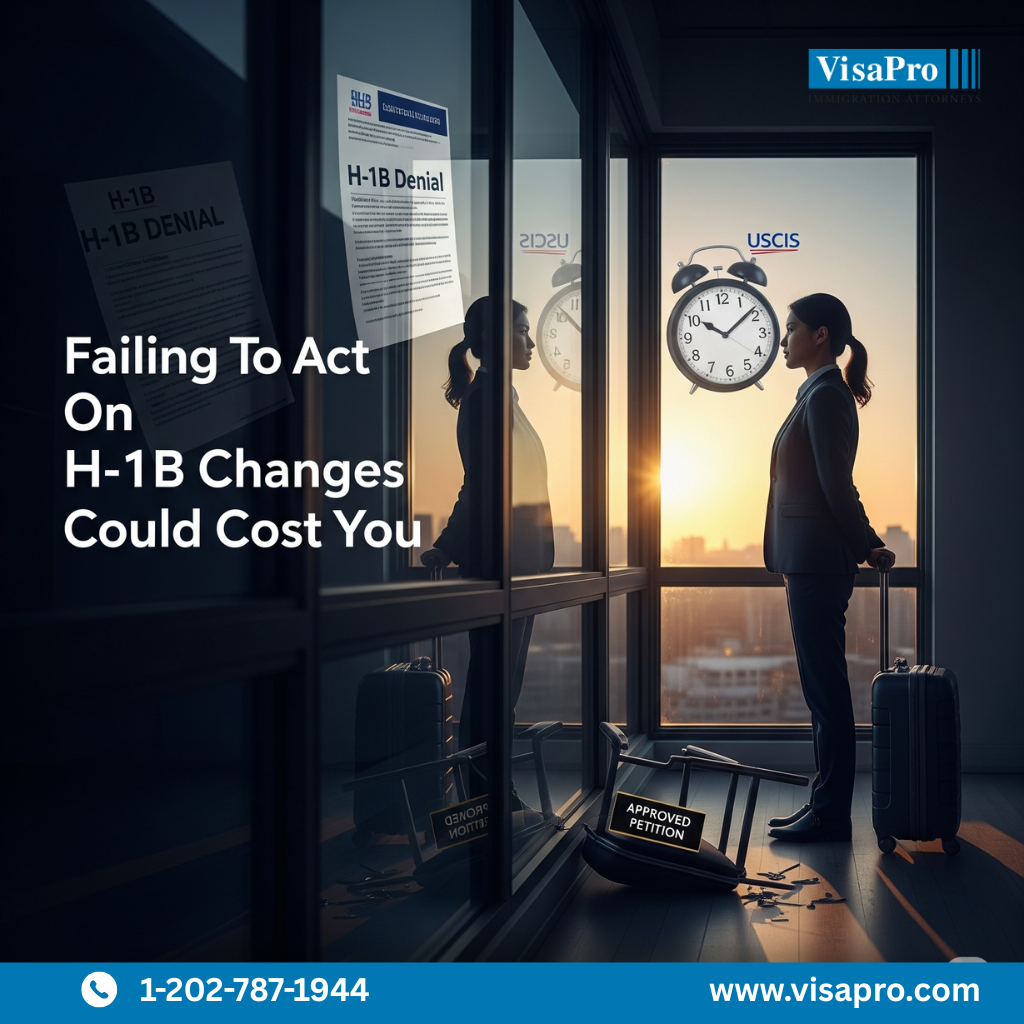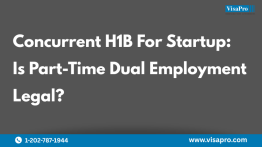Quick Summary:
If your company is undergoing a merger, acquisition, or internal restructuring and you employ H-1B workers, don’t assume their status is safe. One wrong move, like misjudging a successor-in-interest scenario, can put employees out of status and your company at risk. This guide will help you navigate the gray areas with clarity and confidence.
What Happens To H-1B Status After Corporate Changes?
Not all corporate changes trigger an H-1B amendment or new petition.
Some restructurings, like internal department realignments or ownership changes that don’t affect the actual H-1B position, generally do not impact H-1B status. Others, however, especially those involving legal entity changes, may require filing an H-1B change of employer or H-1B amendment petition. Therefore, each case requires a detailed legal review to ensure you pick the right path
Why it matters:
USCIS scrutiny in M&A situations is rising. One misstep can mean status violations, future visa denials, or even bars to reentry.

Understanding H-1B Successor in Interest vs. H-1B Amendment
A “Successor in Interest” can continue employing H-1B workers without filing a new petition, but only if strict conditions are met.
If the “new” entity assumes all assets, liabilities and responsibilities of the original H-1B petitioner, it should qualify as a successor-in-interest. If not, a change of employer petition might be required.
Scenario 1: You May Be a Successor in Interest If…
- A parent company acquires your business, but your company remains intact, with the original FEIN and job duties remaining unchanged.
- Your company merges with another company but continues to operate under the same corporate umbrella and legal structure.
- Your company merges and the newly created entity assumes the assets and liabilities of the merged entities, including all H-1B/LCA obligations.
Action Tip: The employer will need to update the Public Access File to document the successor-in-interest relationship to remain compliant.
Scenario 2: You May Need an H-1B Amendment If…
- Your company merges with another company and continues to operate under the same corporate umbrella and legal structure, but there are material changes to the H-1B employees’ job duties and designations.
- A parent company acquires your business resulting in a reorganization of departments and personnel.
Scenario 3: You May Need to File an H-1B Change of Employer if…
- Your company merges and the newly created explicitly excludes certain liabilities and/or responsibilities of the original petitioning entity.
- Your company merges with another company and in doing so, you sell off or spin off assets that include the H-1B employees’ department.
- A corporate reorganization where more than 1 new entity is created, with new FEIN’s for each new entity and H-1B employees being split across the new entities.
Action Tip: File an H-1B change of employer or amendment before effective or concurrently with the changes becoming effecting. There is no grace period.
Internal Changes That Don’t Require H-1B Action
Certain corporate adjustments are legally neutral for H-1B purposes.
If nothing about the actual petitioner and the H-1B employee’s terms of employment changes, no H-1B amendment is typically needed.
Safe Zone Examples:
- Restructuring internal teams or departments without affecting job roles.
- Changing your company’s “doing business as” (d/b/a) name while maintaining the same FEIN.
- Stock purchase or acquisition where the legal petitioner remains the same.
Myth Buster: A new parent company does not automatically require an H-1B filing; what matters is whether the original H-1B employer remains legally intact and fully liable.

Risky Changes That Demand Legal Review
Even seemingly minor changes can trigger major consequences if mishandled.
Whenever there’s a reorganization, employers must analyze how the new structure affects the H-1B petitioning entity and the employee’s role.
High-Risk Red Flags:
- Legal structure changes (e.g., Inc. to LLC)
- Change in FEIN
- Job title or job description modifications
- Relocation to a new office or worksite
Case Example: A tech startup rebranded and restructured as an LLC after a merger. They assumed no H-1B action was required. Months later, a site visit revealed a new FEIN, and job duties had changed. USCIS issued a NOIR (Notice of Intent to Revoke) for all affected H-1B employees.
Action Tip: Even if you believe the change is minor, consult an immigration attorney before implementing.
When A New H-1B Petition Is Required
Some corporate transitions go beyond successor-in-interest eligibility or amendment scope.
If your company becomes a completely different legal entity or the H-1B role materially changes, you may need to file a “change of employer” H-1B petition.
Example Triggers:
- Complete acquisition resulting in a brand-new corporate entity with a distinct FEIN and where assets and liabilities have not been transferred or subsumed.
- Sale of a business division including H-1B employees to a third-party company
- Spin-off or carve-out of a business line where the petitioning entity dissolves
Common Misunderstanding: “We kept the same office and employees, so no filing needed.” False. What matters is the petitioning entity’s continuity and assumption of liabilities.
How To Protect Your H-1B Workforce During M&A Transitions
Proactive planning can prevent serious legal and operational issues.
Here’s how to stay compliant and protect both the business and its foreign workers:
Checklist for Employers:
- Identify H-1B and other foreign national employees early in the M&A planning process.
- Map the legal change: Will the FEIN change? Will job duties, location, or pay change? Are all assets and liabilities being transferred?
- Assess if the successor-in-interest applies or if a change of employer or amendment is required.
- Post new LCA notices at all relevant worksites, even if duties remain the same, if required.
- File timely amendments or change of employer petitions to avoid out-of-status periods.
- Keep documentation ready to prove that the new entity assumes full H-1B liabilities.
Tip: Include immigration counsel in all M&A due diligence. Immigration risks can delay deals or create unexpected liabilities.
H-1B Change of Employer, Successor in Interest, or Something Else?
Every M&A or restructuring is unique- there’s no one-size-fits-all answer.
To determine whether you need an H-1B change of employer, a successor-in-interest determination, or an amendment, you must closely examine:
- The legal identity of the new entity
- The degree of continuity from the original petitioner
- Any changes to the H-1B employee’s role, location, or salary
Call to Action: Don’t guess your way through M&A immigration. Contact VisaPro’s trusted immigration attorneys to conduct a detailed M&A visa risk review and safeguard your workforce.
FAQs: H-1B M&A Restructuring and Compliance
1.Do I need to file a new H1B or H-1B amendment after my company was acquired?
It depends. If the acquisition changes the H-1B worker’s job duties, location, or if the legal entity and FEIN have changed, a new H1B or H-1B amendment may be required. A detailed legal review is essential.
2.What is a successor-in-interest H1B situation?
A successor-in-interest situation arises when a merger, acquisition or other corporate reorganization results in there being a newly created entity which assumes all the assets and liabilities, including full legal responsibility for H-1B employees, of the original H-1B petitioner. If the job remains unchanged, no new petition is needed, but proper documentation is crucial.
3.What are the requirements for going from H-1B to EB-1C green card?
Yes, if there are no material changes in job duties, salary, or location, a name change alone doesn’t require a new H-1B petition or amendment. You should still document the change and post updated LCA notices.
4.How does an H1B visa amendment differ from a change of employer?
An H1B visa amendment updates a current petition due to material changes in the terms of employment, including the job duties, salary, and/or location. A change of employer petition is required when the H-1B employee moves to a new legal entity not related as a successor-in-interest.
5.What happens if we don’t file the required H1B amendment or new petition during restructuring?
Failure to file a required H-1B amendment or new employer petition can result in employees falling out of status, future petition denials, and potential penalties for the employer. It’s a compliance risk that must be addressed proactively.
Need help deciding between a successor in interest and H-1B amendment?
VisaPro has guided businesses through the most complex restructurings, safeguarding H-1B employees, securing USCIS approvals, and avoiding costly mistakes. Schedule your strategy call today.
What VisaPro Customers Are Saying
The US [B-1] Visa has always been a tough ride, and being denied a few times it makes it even worse. But thanks to VisaPro and their meticulous processing I was granted a Visa. I would like to thank you and all the people involved in making this a success. I would like to recommend VisaPro to all those who seek peace of mind and hassle free Visa processing.”



 Manas Bhat, Director Operations, First Houston Mortgage India
Manas Bhat, Director Operations, First Houston Mortgage India



